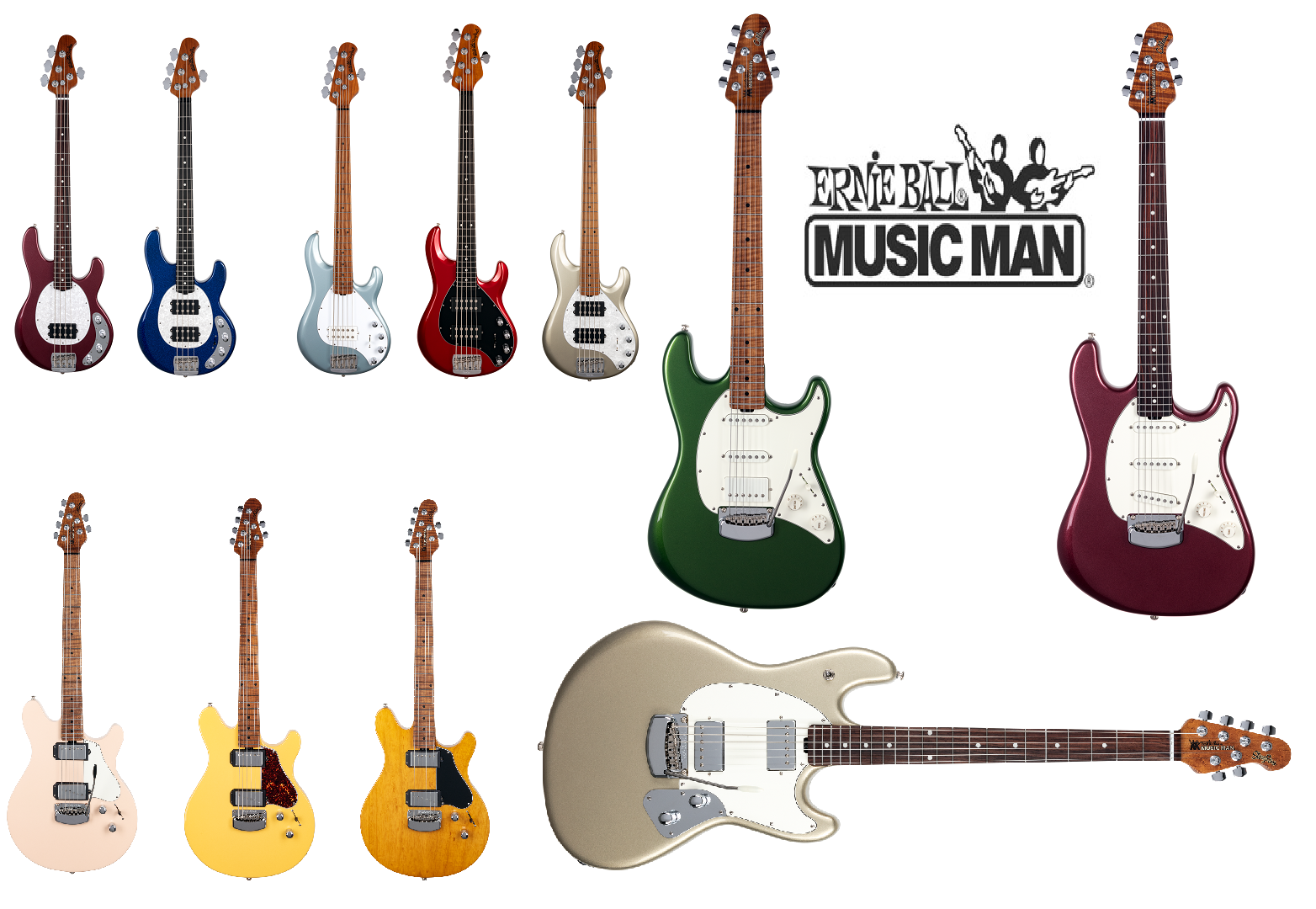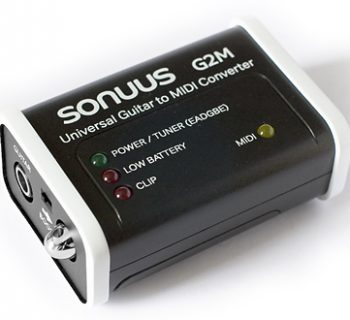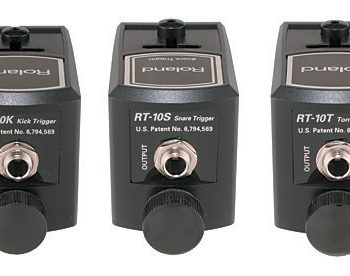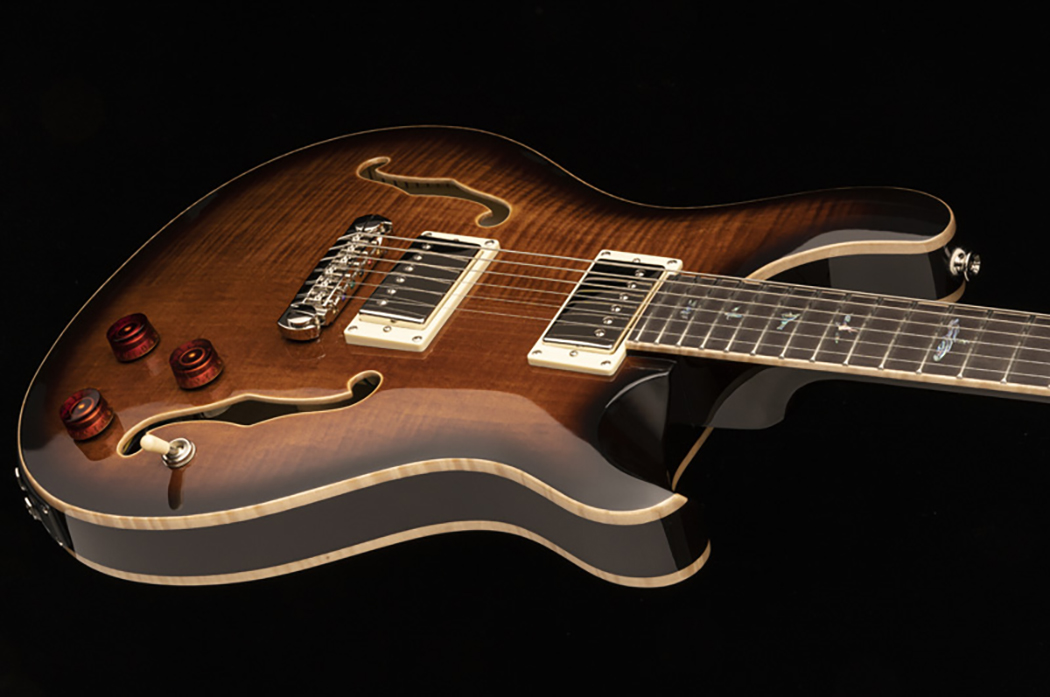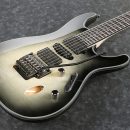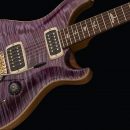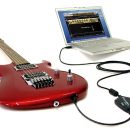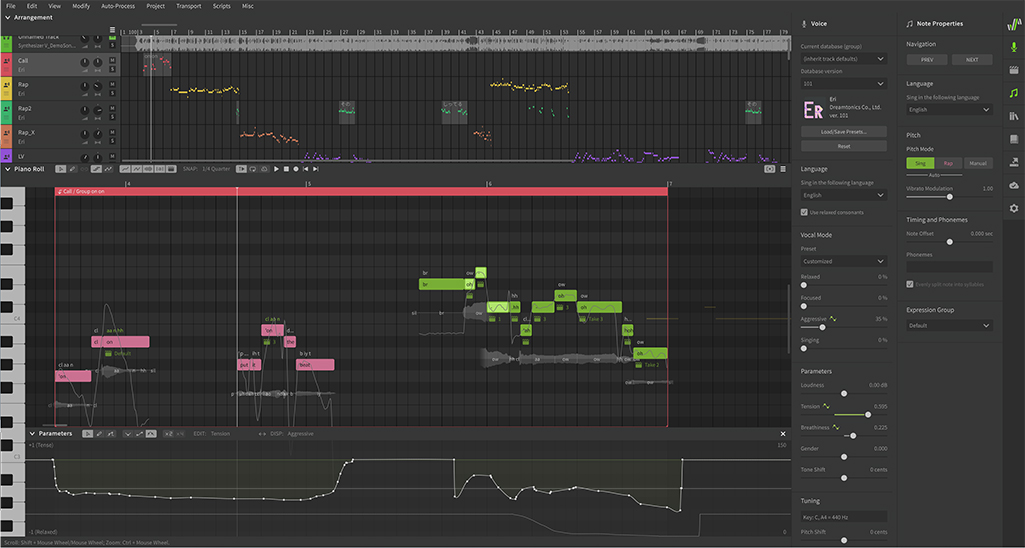 Hold on to your three-octave arpeggios and sharpen up your odd meters! Ibanez does it again with yet another signature model of the highest order, the JBM100, a solid-body guitar with killer tone (as well as looks) that will appeal to a variety of players. Jake Bowen’s band, Periphery, has been redefining progressive metal for nearly a decade, and the new JBM100 plays like a match made in guitar heaven. Players who define their musical weapon of choice—err, we mean instrument—in terms like focused, clean, tight, and fast have got to check the JBM100 out. It’s a great shred guitar, and can easily be applied to conventional hard rock playability, too.
Hold on to your three-octave arpeggios and sharpen up your odd meters! Ibanez does it again with yet another signature model of the highest order, the JBM100, a solid-body guitar with killer tone (as well as looks) that will appeal to a variety of players. Jake Bowen’s band, Periphery, has been redefining progressive metal for nearly a decade, and the new JBM100 plays like a match made in guitar heaven. Players who define their musical weapon of choice—err, we mean instrument—in terms like focused, clean, tight, and fast have got to check the JBM100 out. It’s a great shred guitar, and can easily be applied to conventional hard rock playability, too.
Features
| Category | Value | Rating |
| Features | 20% | |
| Usability | 25% | |
| Sound | 25% | |
| Documentation & Support | 10% | |
| Price | 20% | |
| OVERALL RATING = 3.6, which earns it a WIHO Award! 3.6 stars or better: Outstanding, WIHO Award 3 stars or better: Worth considering 2 stars or better: Suited to specific needs 1 star or less: Not recommended |
||
We started out the review process with high hopes high for this premium, made-in-Japan, Ibanez guitar. As owners of many Ibanez guitars from lines including Jem, Universe, RG, and more, we anticipated receiving a well made, high quality instrument, and we received that in spades.
Upon unpacking the guitar from the box—it shipped in a molded Ibanez hard shell case, we were treated to a gorgeous and stealthy looking black, matte finished instrument on a red velour-like case lining. Included in the case were an owner’s manual, a multi tool for making any adjustment or measurement necessary, and the tremolo arm.
Upon actual inspection, what stood out most to us were two unconventional but interesting looking humbucking pickups. These Titan pickups were designed for the JBM100 by DiMarzio and contribute to the guitar’s unique look. A single volume knob and pickup selector switch were conventionally placed. Continuing with the sleek look of the face of the instrument is an unbranded Lo-Pro Edge Tremolo (our ‘90s era one is stamped, this one isn’t), a single crescent 12th fret marker, ebony fretboard, and finally a reverse headstock with black tuners, locking nut, and hardware.
Turning the guitar over revealed a finished, 3-piece Maple/Bubinga neck, Sperzel locking tuners and a recessed neck joint. This could be the first time we’ve seen American-made Sperzel tuners on a Japanese guitar—a nice touch.
The instrument is almost devoid of any visible wood grain. The 2-piece maple top was finished in black matte like the rest of the instrument, with the exception of about 6mm of the maple’s top edge. This created a classy wood line around the top of the guitar where the top meets the mahogany body. This detail increased in thickness around the double cutaway and followed the carve of the top. Contrasting that nicely was the bound ebony fretboard, which also featured a bare wood finish. Twenty-four jumbo frets with Ibanez’s prestige fret edge treatment begged to be played.
 The Ibanez JBM100 shipped with .11 gauge strings in drop C tuning (1D, 2A, 3F, 4C, 5G, 6C) for your most disemboweling riffs you can chug out, but don’t worry if you prefer standard tuning—it works just fine there as well (more on that later).
The Ibanez JBM100 shipped with .11 gauge strings in drop C tuning (1D, 2A, 3F, 4C, 5G, 6C) for your most disemboweling riffs you can chug out, but don’t worry if you prefer standard tuning—it works just fine there as well (more on that later).
Usability
This guitar was meant to be played loud, heavy and fast! The guitar itself was fairly light and made slinging it around at our gigs effortless, but we found the factory .11 gauge strings to be a bit cumbersome to play. Our fastest lines took just a little more work, effort, and concentration. This wasn’t an impossible hurdle, though, and it’s one that can be easily seasoned to taste if death metal isn’t your thing.
Sitting down with the instrument and playing a few lines revealed a fairly wide but thin neck with a little more bow from the factory than we would have liked. Somewhere between ¼ and ½ turn of the truss rod corrected that. Neck profiles are probably the single most subjective features on a guitar. The neck wasn’t prohibitively wide like some other instruments we have come across, but it was close to it, almost bordering on 7-string territory. The thinness of the neck, between 18 and 20mm, compensated for the width and made the guitar easily playable.
We have owned dozens of guitars with locking tremolos, including many other Ibanez’s. We had high hopes for the Lo Pro Edge the JBM100 shipped with, and it didn’t so much meet our expectations as it completely blew them away. Once we tuned the guitar and made a few adjustments (including setting it up in standard tuning), we could not knock this tremolo out of tune! The tremolo always perfectly returned to zero (pitch). We have had the guitar a month, playing almost daily, and have yet to touch a fine tuner. The JBM100 has gone through the usual northeast United States fall/winter temperature changes and has yet to need an adjustment. Needless to say, this impressed us and reinforced Ibanez’s reputation of making precision, high quality instruments.
The only thing we didn’t like about the tremolo system was Ibanez’s use of Teflon washers to adjust the tension of the tremolo arm. We preferred a stiff arm we can flutter the tremolo with, but that could be owed to this being a signature model instrument. After a few days of use, the arm became looser and looser, finally hanging down to the floor. The manual suggests using the maximum number of washers on the arm, which it shipped with. It also suggested replacing the washers if we couldn’t achieve the desired tension. The guitar shipped with extra washers, but having to replace tremolo arm washers on a weekly basis wasn’t a very appealing or practical idea.
The pickup selector switch and the single volume knob were far enough out of the way and intelligently placed as to not be a problem. We questioned the overkill of Sperzel locking tuners behind a locking tremolo’s locking nut, but for a guitar with such excellent tuning stability, it worked great, and certainly makes string changes quicker. The included strap buttons will live the rest of their lives in the case, as we swapped them out for our favorite strap lock system (little issues aside, we loved this guitar so much that we knew right away we’d be purchasing the review instrument for keeps).
Sound
We tested the JBM100 in the best way possible: in front of a club full of people. We had a pretty eclectic set list for the evening and set up a Marshall DSL 2000 mated to a pedalboard filled with random goodies. Our sonic range went from brutal high gain to ambient, colorful dreamscapes.
In medium and high gain settings, the guitar sounded evenly balanced. The pickups were noticeably articulate. There was good separation in extended chord voicings, and single-note lines had character and presence to them, which we attributed mostly to the DiMarzio Titan pickups. In cleaner settings, the guitar rang true and clear, and dialing the volume knob back cleaned up the sound nicely. The .11 gauge strings sustained quite well.
The bridge and neck pickups are clearly mated for one another. Neither gets too shrill or flubby sounding. DiMarzio’s tone guide listed both pickups fairly flat, and we could hear it. This was a very aggressive sounding guitar perfectly suited for heavy styles of playing, but it wasn’t exclusively a one-trick pony, as our cover band gig revealed.
 Cleaner passages were a little less impressive, but not by much. This HH-configured guitar had the obvious omission of a single coil pickup. The JBM100 offers the neck pickup in parallel when selected in position 4 of the 5-position pickup selector switch. This did add a little more versatility to the instrument, but a HSH configuration would probably take things over the top.
Cleaner passages were a little less impressive, but not by much. This HH-configured guitar had the obvious omission of a single coil pickup. The JBM100 offers the neck pickup in parallel when selected in position 4 of the 5-position pickup selector switch. This did add a little more versatility to the instrument, but a HSH configuration would probably take things over the top.
Documentation and Product Support
The Ibanez JBM100 shipped with a 206-page Prestige manual in seven languages. If you live in a part of the world where you don’t wrestle half naked with your supper for survival, there is probably a language in here for you.
The English portion was 27 pages long and covered many tremolo systems and electronics that cover a wide range of Ibanez instruments. The information that was applicable was very useful in setting up the guitar to taste.
Price
The Ibanez JBM100 (MSRP $3,333.32) sells for approximately $2,499.99. In the world of pro-level guitars, this is mid-priced, and for a high quality, made-in-Japan, Ibanez signature model, we feel it’s an excellent value.
Contact Information
Ibanez
www.ibanez.com
| Evaluation Short-List |
|




